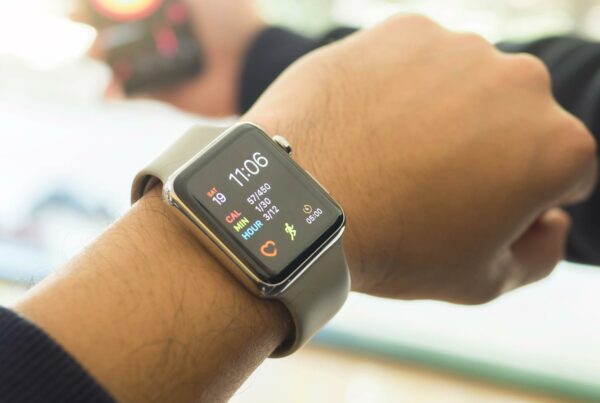It is no secret that data has become important in recent years. As our ability to collect and store information has grown, so has our ability to glean insights from that data. This is particularly true in the healthcare industry. Data analytics can achieve a wide range of objectives, from reducing treatment costs to improving the quality of life.
Healthcare analytics can potentially transform how we manage our health, both on an individual and population level. By leveraging big-data, we can identify trends and patterns that would otherwise be undetectable. These insights can help us predict and prevent disease outbreaks and improve the quality of care that patients receive.
Healthcare analytics will become increasingly important in a world where the average human lifespan is increasing. We must learn to use data effectively to meet the challenges of an aging population. By harnessing the power of data, we can ensure that everyone has access to the best possible care.
Electronic health records (EHRs)
EHRs, or electronic health records, are one of the most critical applications of big-data in medicine. Every person has a digital record, including demographics, medical history, allergies, laboratory test results, and more. These records are available via secure information systems for providers from the public and private sectors. In addition, every record comprises one modifiable file. This means that doctors can implement changes over time with no paperwork and no danger of data replication.
EHRs provide several benefits for both patients and providers. First, EHRs make it easier for patients to get the care they need by providing doctors with a complete picture of their health. EHRs can also trigger warnings and reminders when patients should get a new lab test or track prescriptions to see if they have been following doctors’ orders. For providers, EHRs improve the quality of care by making it easier to track patient progress and identify potential problems early on. In addition, EHRs can help reduce costs by preventing duplicate tests and eliminating the need for paper records.
Overall, EHRs are a crucial part of the shift towards evidence-based medicine. By providing accurate and up-to-date information on patients’ health, EHRs enable doctors to make better decisions about diagnosis and treatment. In turn, this helps to improve patient outcomes and reduces costs across the healthcare system.
Although electronic health records (EHR) are a great idea, many countries still struggle to implement them fully. The United States is probably the forerunner, but other parts of the world, such as the European Union and Asia, still lag.
However, a recent European Commission directive aims to create a framework for Member States to develop and implement EHR systems. This could potentially lead to significant improvements in healthcare across the EU. Of course, only time will tell if the directive will be successful in its goal, but it is undoubtedly a step in the right direction.
A McKinsey report on big-data healthcare found that integrated medical records improved outcomes in cardiovascular disease and achieved an estimated $1 billion in savings from reduced office visits and lab tests. The report also found increased patient satisfaction and engagement scores.
Real-time alerting
While the concept of real-time alerts is not new, its potential in the healthcare industry is only beginning to be realized now. For example, Clinical Decision Support software analyzes medical data in hospitals, providing health practitioners with advice as they make prescriptive decisions.
However, doctors want patients to stay away from hospitals to avoid costly in-house treatments. Wearables will collect patients’ health data continuously and send this data to the cloud. From there, AI-powered analytics will identify trends and anomalies, generating alerts that can proactively address potential health issues. This type of data-driven approach has the potential to transform healthcare, making it more proactive and preventative, and ultimately saving lives.
With this information, doctors can access a state-level database to see how the general public is doing regarding their health. In addition, they’ll be able to compare that data against different factors like income brackets and socioeconomically disadvantaged areas, which should give them more insight into personalized care strategies.
Prevent opioid abuse
Opioid overdoses have now become the leading cause of accidental death in the United States, surpassing road accidents. The problem has gotten so severe that Canada has declared it a “national health crisis.”
Care providers can use data to help solve the problem by understanding patterns of abuse and misuse to develop targeted interventions to help save lives. For example, big-data already tracks the distribution of opioids and identify “hot spots” of abuse.
Predictive analytics in healthcare
We have already recognized predictive analysis as one of the biggest business intelligence trends, but the potential applications reach far beyond business and further into the future. For example, healthcare online business intelligence aims to help doctors make data-driven decisions within seconds and improve patients’ treatment. This is particularly useful in the case of patients with complex medical histories suffering from multiple conditions.
New BI solutions and tools would also be able to predict, for example, who is at risk of diabetes and thereby advise the use of additional screenings or weight management. In addition, treatment plans could be created and tailored specifically for each patient to provide the best possible outcome. With predictive analysis, we are only beginning to scratch the surface of what’s possible in terms of using data to improve our lives.
Reducing fraud and enhancing security
Healthcare organizations hold a vast amount of sensitive data on their patients, which makes them a prime target for cyber-attacks. Studies have shown that 93% of healthcare organizations have experienced a data breach. The reason is simple: personal data is extremely valuable and profitable on the black markets. As a result, many organizations use analytics to help prevent security threats. They identifying changes in network traffic or any other behavior that reflects a cyber-attack. In addition, advancements in security, such as encryption technology, firewalls, anti-virus software, etc., answer the need for more security, and the benefits largely overtake the risks. Yes, there are always risks involved in using big-data. However, the potential rewards make it too valuable for healthcare organizations to ignore.
Analytical tools have helped streamline the insurance claims process. These tools result in faster payments for caregivers and better returns for patients. For example, the Centers for Medicare and Medicaid Services reported savings of over $210 million in fraud prevention within a year. These tools can also help to reduce the incidence of inaccurate claims. They also provide a more efficient and effective system for all involved. In this way, analytical tools are essential in improving the insurance claims process and protecting against fraudulent or inaccurate activity.
Big-data analytics and medical imaging
Medical imaging is vital; each year, doctors in the US prescribe about 600 million imaging procedures. However, analyzing and storing these images is expensive in terms of time and money. Radiologists need to examine each image individually, and hospitals need to store them for several years.
Big-data analytics for healthcare can help algorithms analyze hundreds of thousands of images. They can identify specific patterns in the pixels, and convert them into numbers to help the physician with the diagnosis. They even go further, saying that radiologists will no longer need to look at the images but instead analyze the outcomes of the algorithms. These algorithms will inevitably study and remember more images than they could in a lifetime. In this way, big-data analytics has the potential to revolutionize medical imaging and create significant efficiencies in the healthcare system.
Advanced disease and risk control
Big-data has the potential to revolutionize the healthcare industry. By collecting and analyzing data, healthcare providers can better understand the hospitalization risk for patients with chronic conditions.
Care providers can then use this information to develop preventative care plans. These plans can help reduce the likelihood of deterioration and the need for hospitalization. In addition, they can also use big-data analytics to identify patterns and trends in patient behavior. This analysis empowers healthcare providers to address issues before they become problems proactively. The potential benefits of big-data are vast, and its impact on healthcare is just beginning to make impact.
These examples show how data and analytics can impact the healthcare infrastructure. It has the potential to make a real difference in the lives of patients and care providers.














